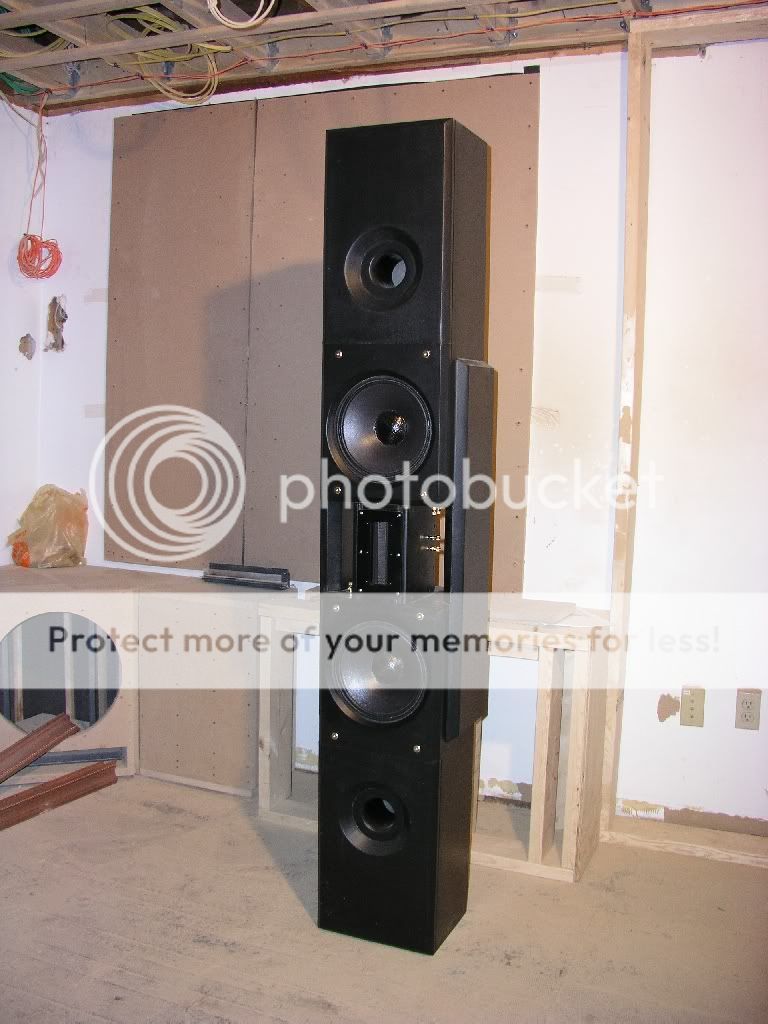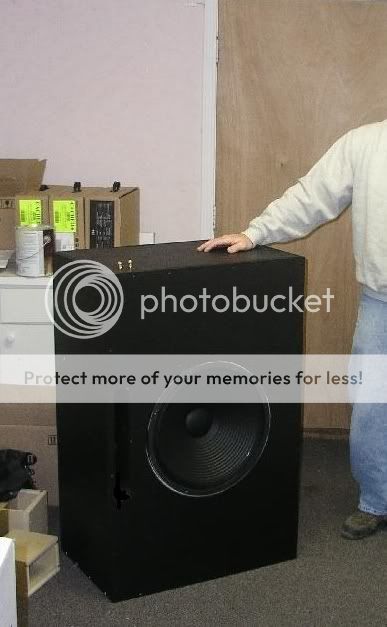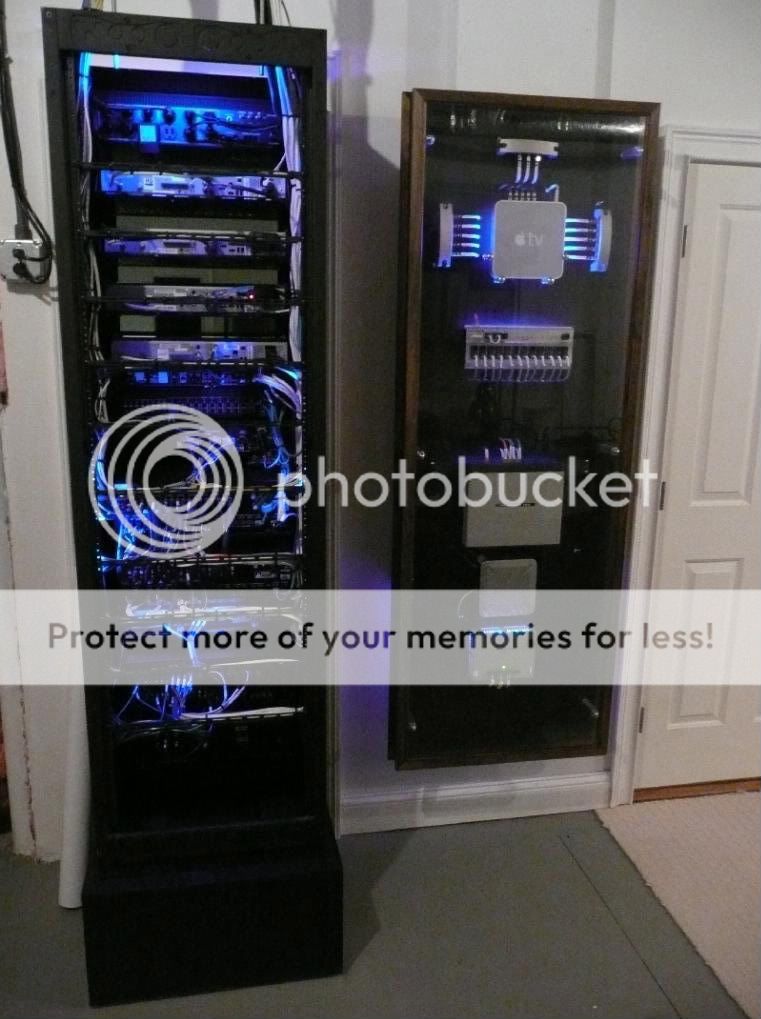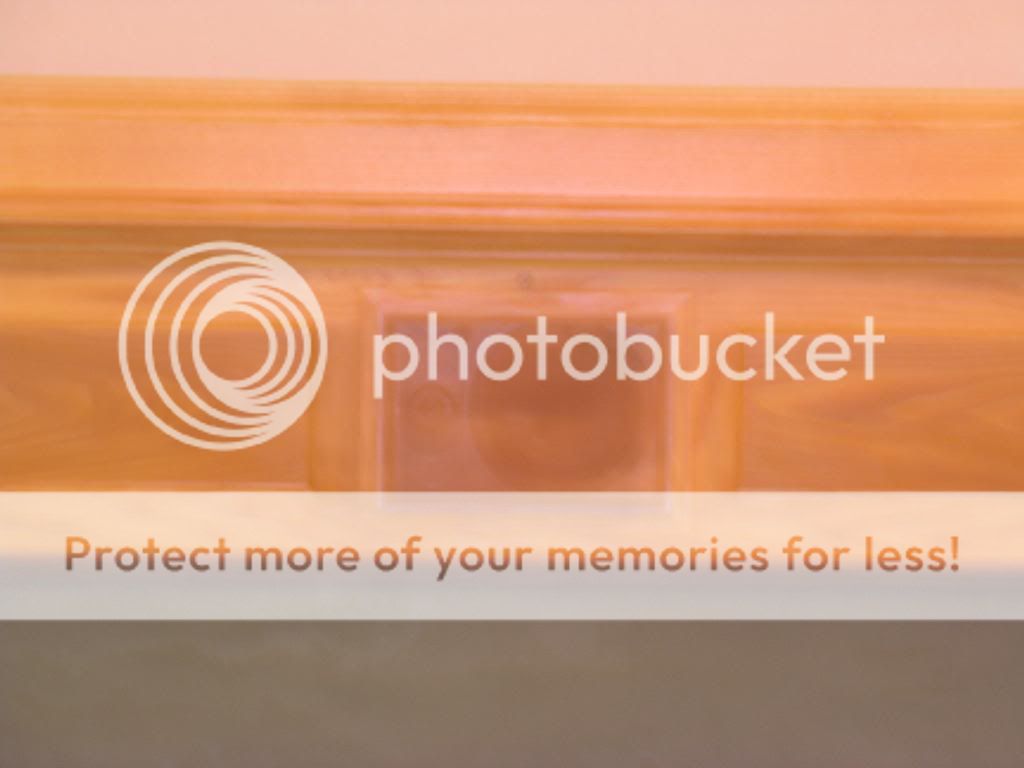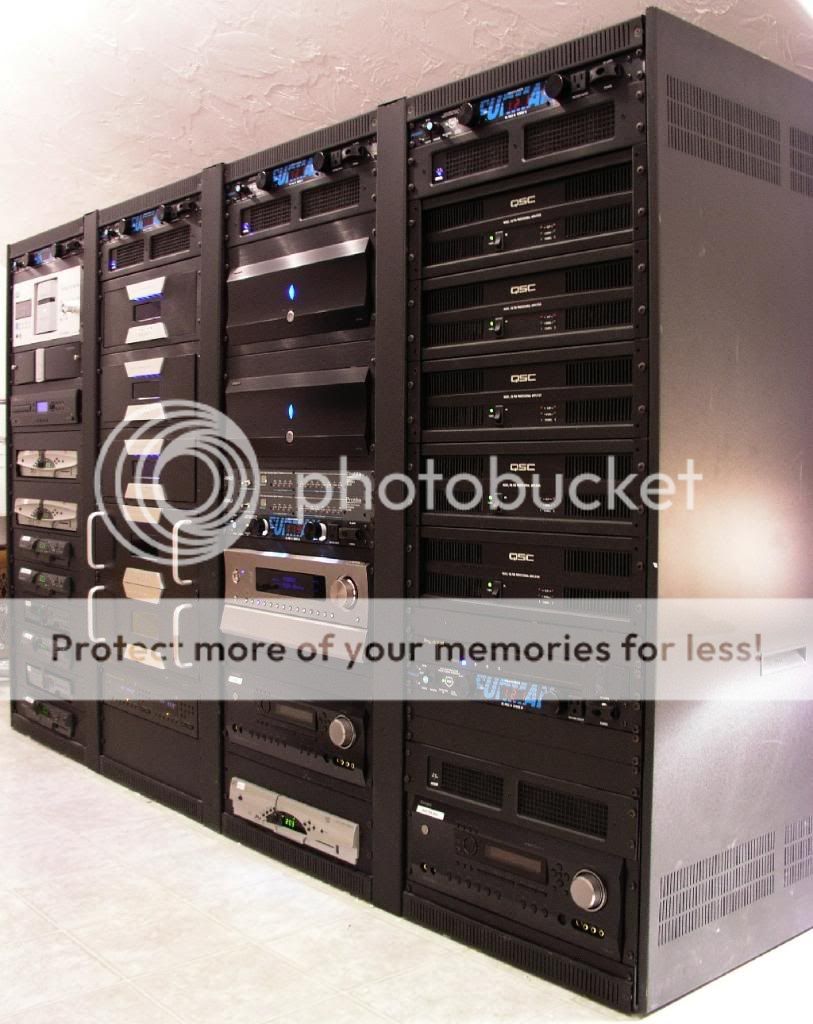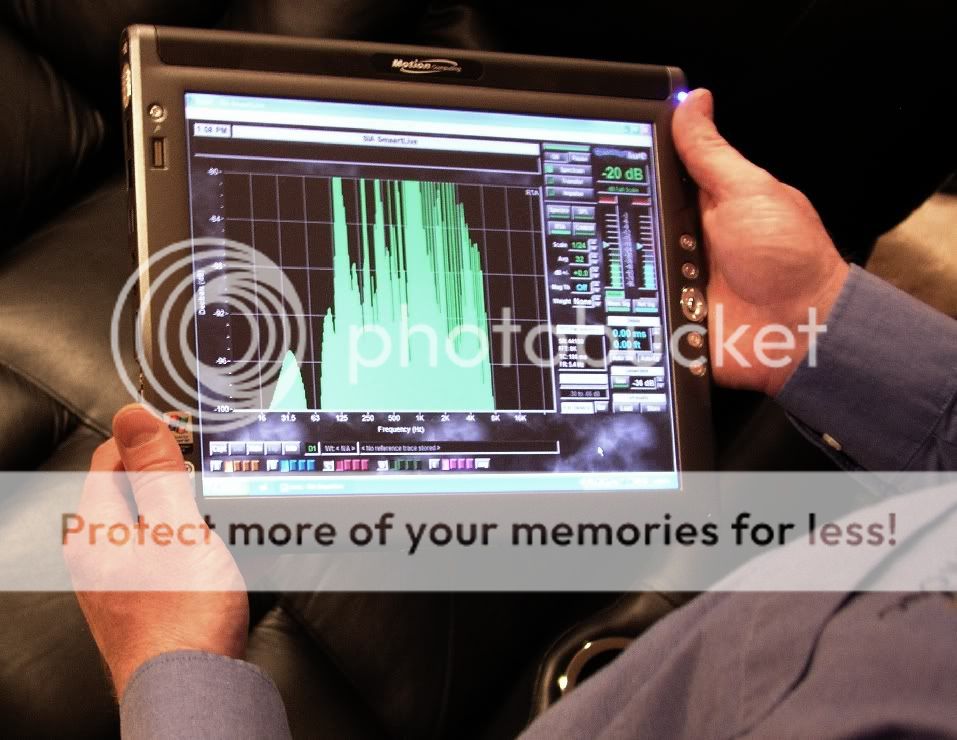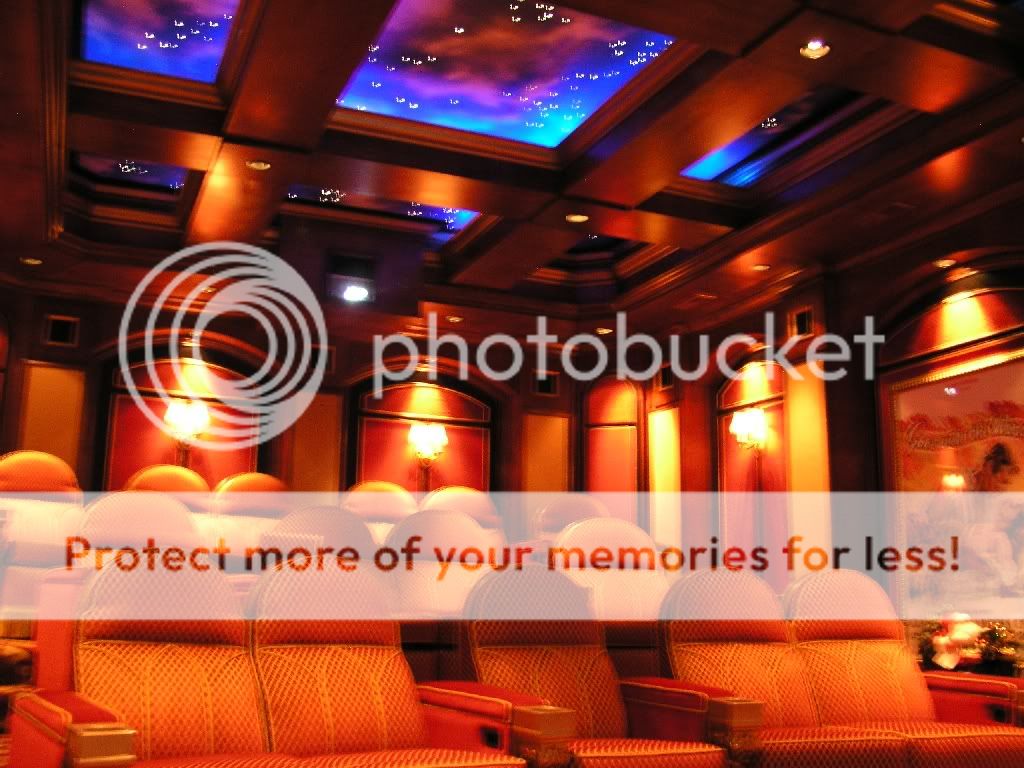Here are a few photos I took recently of some of our jobs. We do a lot of custom stuff, sort of reminds me of the old car stereo days sometimes. Here is a custom speaker we built 7 of for a theater. These cost about $35,000. The tweeters are ribbon, the woofers are 10" european drivers made by PHL. The cabinet is 2" of heavily braced MDF. The damping material in the cabinet is something called Black Hole 5, it is a 5 layer material. It's not cheap. The crossovers are all electronic, system is tuned and EQ'ed after it is installed. They are about 6 feet tall.
Here is a custom subwoofer of a similar design. This is a 9.5 cubic foot cabinet with 3" thick MDF, and its internally braced by metal rods. The driver is a TAD 18". This sub is -3db at around 8 Hz. We had 2 of these in a theater with about 2600 watts going to them.
Here is the back of a rack wired neatly. Its hard to tell in this picture but everything is well organized, every wire is has a label on heat shrink tubing around it. This was in the finishing stages, the final product is even cleaner. To the right is cable, telephone, and internet distribution modules covered by a glass panel. That is to keep the cable and telephone service guys away. They see that and they realize they can't handle it and they call us instead, which is what we want.
This is a wood fireplace mantle holding a custom painted grille on a Focal center channel speaker. No one notices there is a speaker there:
Here is a typical equipment rack. All this stuff runs on 20 amp circuits, it is all thermal controlled, and there is battery backup on all the sensitive equipment. We can remotely control a lot of this from the office. If the client wants to change light scene settings or security system settings, we can do it for them without going there. We just confirm changes over the phone. It's pretty neat.
Here is a shot of the room acoustic analysis equipment. We use this data to then tune the electronic EQ's for the rooms. This particular one is JBL SMAART pro.
Here is a Crestron touchscreen on the wall. On this you can control security, temperature, set whole house lighting scenes, control music, talk to any other room, all rooms, or front door, see any security camera or watch the cameras. You can also make phone calls with the speaker being either through the screen or the ceiling speakers in the room. It keeps a log of all calls. We usually setup scenes so that onbe button press does a whole host of things. Once you get used to it, you never want to go back to the ordinary. The larger model has a fingerprint reader. So each of your nine fingers can activate any number of scenes. Sometimes we setup different GUI's for the husband and wife, using their fingerprints. So they essentialy have different looking panels.
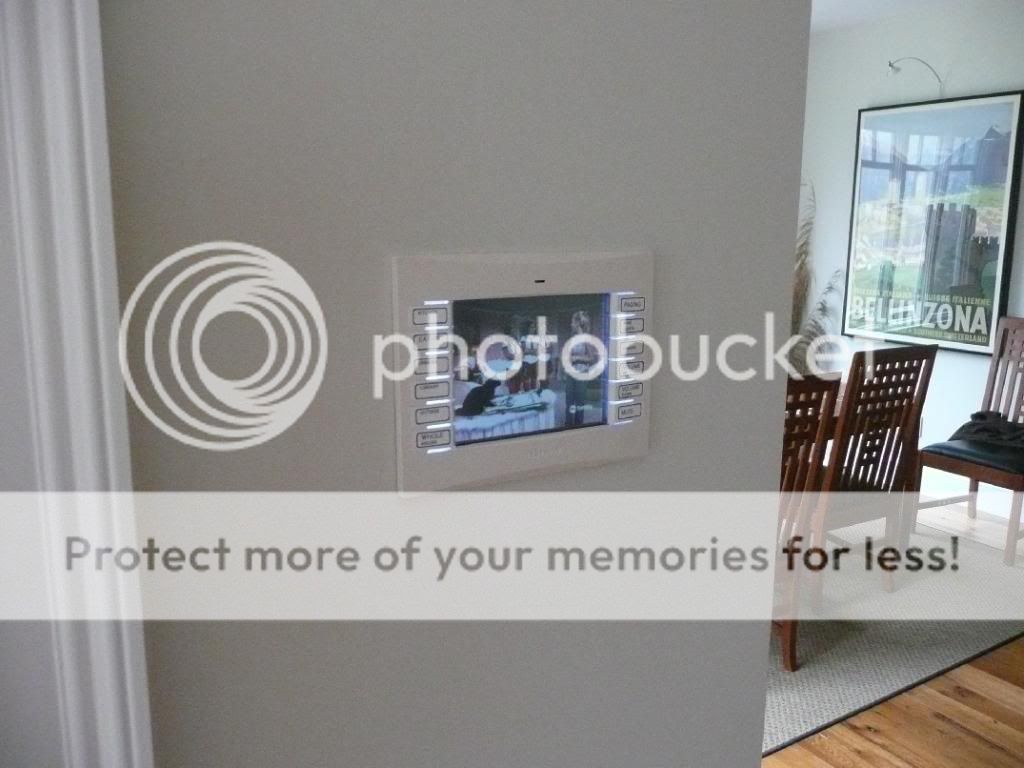
Another custom subwoofer for a room finished in oak with the grille off. This is another 18" driver in a 6.5 cubic foot cabinet. This was a multi-purpose room. Family room and theater with a 110" screen that drops in front of a plasma.
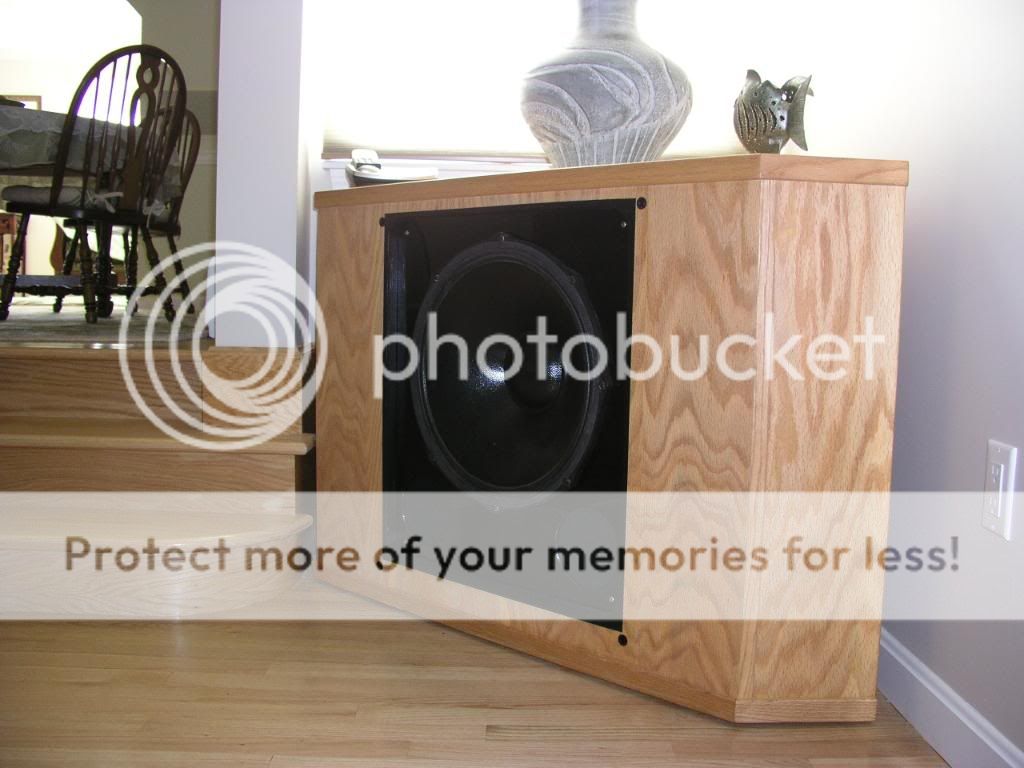
And here is a picture of a 17 seat theater with a 1950's theme. The fiber optic sky changes colors, day and night modes, etc. There is a ton of motorization in this theater including a custom 200 pound center channel that comes out of the floor, motorized black out shades (the windows look out into the ocean), motorized 120" screen, motorized curtains and valence). When you hit "on", the room transforms. All seats are motorized and have heat and massage, they also each have a tactile transducer built-in that shakes the seat. The main "money" seats sometimes get actual motion that is encoded into a computer for that particular movie. The seats actually move up, down, left, right, back and forth. Its intense. Some of these projects wind up costing over 1 million.
Pardon the photography, I did this with my own camera and I am not very good.
I can post more pics if you guys want.






